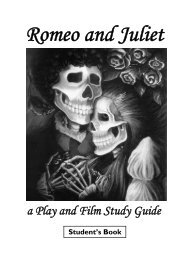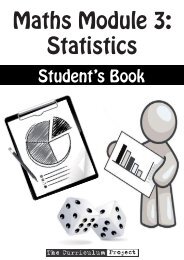Teacher's Guide - The Curriculum Project
Teacher's Guide - The Curriculum Project
Teacher's Guide - The Curriculum Project
- No tags were found...
You also want an ePaper? Increase the reach of your titles
YUMPU automatically turns print PDFs into web optimized ePapers that Google loves.
Global Economic Institutions (cont’d)Pre-teach: fixed exchange rates: a system where the exchange rates of the currencies of agroup of countries are fixed so that they do not change. This is usually done to increaseeconomic stability in a region.Ask students to read the first three paragraphs about the IMF, including ‘Criticisms’.Elicit words that they don’t know. Ask if they, or other students, can guess themeaning. If not, give them a dictionary to look it up and tell the class.Pairwork1. True or false. Write the following statements on the board. Ask students todecide whether they are true or false. When ready, elicit answers from pairs.1. <strong>The</strong> IMF lends money to countries in need.Answer: True.2. Countries with small economies are allowed to borrow more than countries with largeeconomies.Answer: False. Countries with large economies are allowed to borrow more than countrieswith small economies3. Countries with large economies have more control over IMF decisions than countrieswith small economies.Answer: True.4. <strong>The</strong> fund continues to lend money to Myanmar.Answer: False. <strong>The</strong> IMF stopped lending money to Myanmar in 1988.5. Critics of the IMF argue that its policies in many poor countries have created lesspoverty.Answer: False. Critics of the IMF argue that its policies in many poor countries have createdmore poverty.Pre-teach: drastic (adj): very severe and sudden.Ask students to read ‘<strong>The</strong> IMF and the East Asia Financial Crisis’.On Your Own2. Multiple choice. Copy the following exercise on the board. Give students timeto complete it. <strong>The</strong>n put them into pairs and ask them to briefly compare theiranswers. Elicit answers from individual students and check agreement with theclass. Finally, read through the text again with the students.1. Which one of the countries below suffered the most in the 1997 financial crisis?a. Cambodia b. Thailand c. Singapore2. Many people blamed the IMF for the crisis saying thata. they encouraged countries to liberalise the economies too slowly.b. they didn’t encourage countries to liberalise their economies.c. they encouraged countries to liberalise their economies too quickly.3. <strong>The</strong> IMF’s solutions were criticised becausea. they didn’t demand enough reform.b. they demanded drastic reform, including a huge cut in government spending, and nohelp for failing businesses.c. they demanded huge government spending and help for failing businesses.Answers: 1: b 2: c 3: b<strong>The</strong> <strong>Curriculum</strong> <strong>Project</strong> ECONOMICS: an introduction - Teacher’s <strong>Guide</strong>51



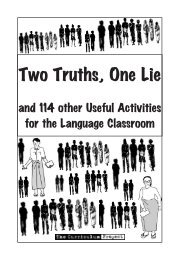
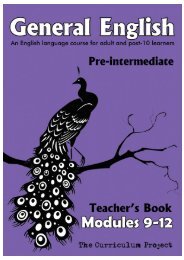
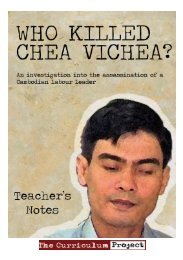

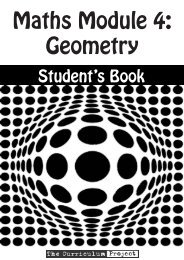

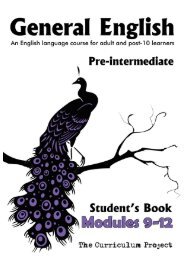

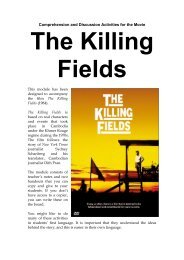
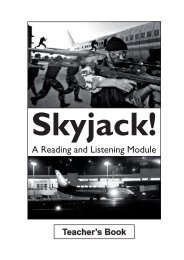
![[Eng] Nov 2012 DRAFT - The Curriculum Project](https://img.yumpu.com/45590859/1/184x260/eng-nov-2012-draft-the-curriculum-project.jpg?quality=85)

